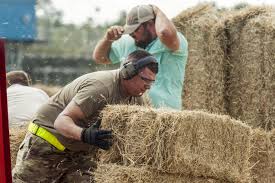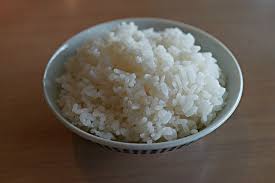I was a diabetic for a short while when my ‘health care provider’ said my kidney test was bad and I would have to go to a specialist. In fact, when she told me what not-so-close town the specialist was in (because of Medicaid), I tried to tell her how difficult it would be to get there, but she said if I didn’t go somehow I might be reported to adult protective services and they would put me in a home. [Which is absurd. They don’t have homes even for people who need it. A person like me with a Mensa level IQ and Asperger Syndrome would never be put in a home no matter who reported her. And one is allowed to refuse medical treatment in this country— it’s a right.]
Anyway, I went to a good kidney doctor, and when she got fired from the medical business in question I got a far worse kidney doctor. And the worse one said the meds I was on were bad for my kidneys so I had to quit them. The only medication I could take for my diabetes was insulin, and neither the kidney doctor nor my ‘health care provider’ was in any big hurry to get me on insulin.
I found that my keto diet, when I kept to it, controlled my diabetes as well as the drugs anyway. But either way, my blood sugars still weren’t great. I got readings like 150 and 175, which was better than what I got when I was not on keto or meds, but not what I wanted.
Then I learned about Dr. Jason Fung’s approach. He got started recommending fasting to his patients because some of them just wouldn’t understand what he meant when he told them about the keto diet. He’d say they can’t have bread, so they ate pita bread or flatbread. They showed him food diaries filled with pasta and regular pizzas. And so he had the idea to try fasting— which is zero carb, zero calorie and zero fat.
Dr. Fung has his diabetic patients do 36 hour fasts, and sometimes starts severe diabetics on a 7 to 14
day fast. (Read more about it in the
Complete Guide to Fasting by Jimmy Moore & Dr. Jason Fung.) I was too chicken to do fasts as long as that— even though I was already on keto and knew keto makes you less hungry so you can easily skip a meal.
I started with the No-Breakfast Plan— skipping breakfast to extend my overnight fasting by a few hours. I’d known about this since I read the book ‘Fit for Life,’ though I did not think the author of that book was basing his recommendations on science. And after a while I was able to extend this into ’24-hour’ fasting.
Now, really ’24-hour’ fasting should be called 23.5 hour fasting, because you eat supper every day. So if you are on Metformin, you can still take it with a meal every day— though with fasting in your life, you and your doctor or ‘health care provider’ should reduce the dose of any meds you take. You don’t want to be getting too-low blood sugars every day and still have to take meds that will send them still lower!
After I could do 23.5 hour fasting I went on to 36 hour fasting, and then I did a 5 day fast. And then another 5 day fast. And it wasn’t scary! Day 2 was kind of hard, but since Dr Fung allows plain tea and black coffee and home-made bone broth as fasting fluids, I got through and the end of the fast was easier. In fact on my first 5 day fast I could have gone longer, except that I had bought some delicious smoked salmon at a distant grocery store and I wanted some. Which is OK. Fasting isn’t an endurance contest!
When I added some fasting to my life, my blood sugar numbers went under 100, and sometimes as low as 82. I was becoming like a non-diabetic! Of course, the longer I went without a full-day fast, the higher my numbers began to creep. Dr. Jason Fung recommends his patients fast 3 days a week, regular. This can be alternate day fasting, or you can do them all in a bunch. I’m thinking of doing mine all in a bunch on Monday through Wednesday, but when I’m ravenously hungry on Mondays, I don’t do fasting that day, except for the No-Breakfast Plan.
My belief is that when you are feeling overly hungry, or ill, or stressed with unusual stresses like a visit from the mother-in-law, that’s not the best day to fast. You can always fast a different day. And you can always fast for several shorter periods instead of a long fast.
How does fasting help? Type 2 diabetes happens because of insulin resistance. Your body overreacts to foods— particularly high-carbohydrate foods— by making more insulin than you need. You may get low-blood-sugar symptoms from this. In time your body starts ignoring some of the insulin. So your body makes even more extra insulin. In time you get higher than normal blood sugars, not because you lack insulin, like a Type 1 diabetic, but in spite of your high insulin levels.
When you don’t eat, your body isn’t signaled to make insulin, so your insulin levels go down. Since you are not eating food, your blood sugars go down. Your body starts switching over to a state called ketosis, if you are not in ketosis because of a ketodiet. (Ketosis is not the same thing as ketoacidosis, a dangerous state that Type 1 diabetics can get that features high ketones and high blood sugars.) Fasting, in effect, makes your diabetic body act less diabetic. Ketodiet plus fasting can make some diabetics into recovering diabetics and ex-diabetics, though they have to keep on doing the keto and fasting!
What about weight loss? I was on a plateau on my Atkins/keto diet for some time when I developed diabetes, and frankly I no longer expected weight loss. I just wanted better blood sugars without going on insulin, which I knew would cause weight gain and make things worse. But fasting plus strict keto started the weight loss again and I am now probably twenty pounds less than my plateau weight, and down to 172 from my lifetime high of 255. I’ve purchased smaller jeans and discovered I need the next smaller size to fit well! Since losing weight of itself is supposed to help T2 diabetes, this is a good thing.
The main thing I have to say to other Type 2 diabetics out there is don’t despair. Don’t feel you have no hope. Your diabetes can be improved, and you can do things yourself to improve it.
Of course, if you are on meds, you will have to see your doctor to adjust them. If you aren’t on meds yet, and you are just going to start with ketodiet and with the No-Breakfast Plan and perhaps 23.5 hour fasting, your doctor will probably be OK with it. Once you get some results, he may be reconciled to it. Or you can possibly switch to a more keto-and-fasting friendly doctor. If you have a doctor that says no-no-no, ask for the scientific motivation behind his answer. If he has none, if he doesn’t know about Dr. Jason Fung’s book and won’t read it when you tell him, if he just says fasting is bad because if you keep it up forever you will die, that’s not the right doctor for you. If, however, he points out that you have some rare condition that he believes will not be helped by fasting, ask if just keto is OK, or just keto plus the No-Breakfast Plan. If you can’t do the whole 5 day or 7 day fasting thing, you can do it in increments.









